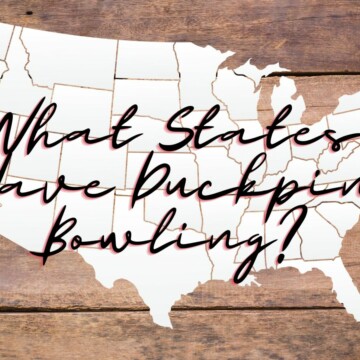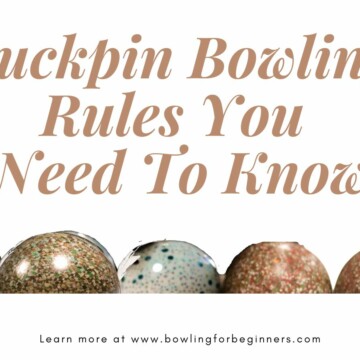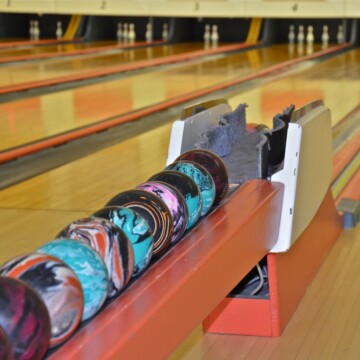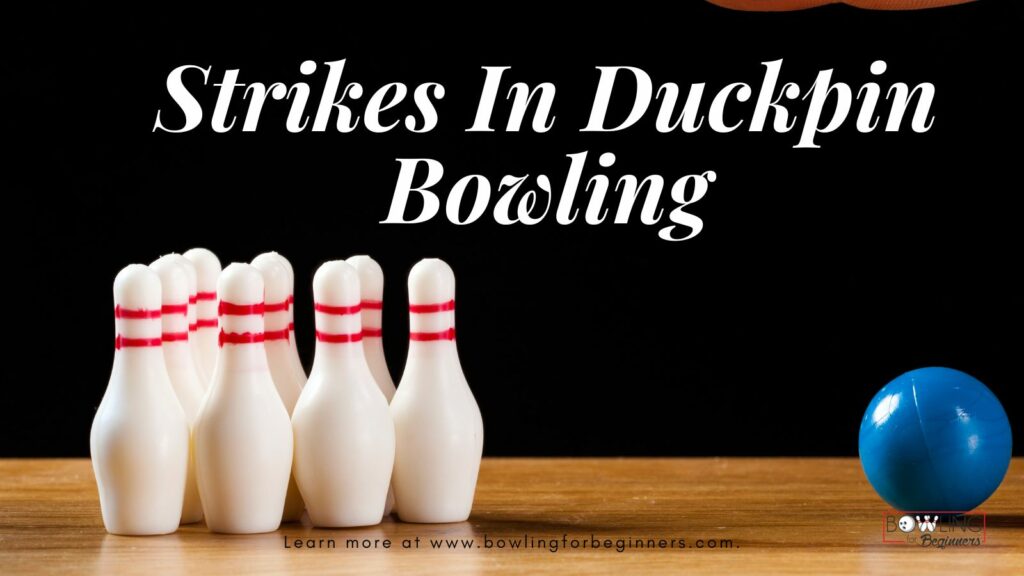
Learning to play Duckpin bowling, a variation of ten-pin bowling (ten pins), you realize it’s much harder to get a strike. The goal is still the same: to knock down as many pins as possible. However, do you want to know how to get more strikes?
In this article, we’ll tell you actionable duckpin bowling tips to increase your chances of getting a strike in duckpin bowling. Let’s get right into it!
Contents
How to Get a Strike in Duckpin Bowling
There is no single way to guarantee a strike in duckpin bowling. There are so many variables in play that even seasoned pros can't nail a strike every time. So, we want to share five focus points that can increase your odds of striking:
- equipment
- what to aim for
- deliverance
- speed
- environmental factors
- adapting
Remember, a strike is when all of the pins are knocked down on the first roll.
Know the Equipment
Duckpin Bowling Balls: The Duckpin bowling rules by the National Duckpin Bowling Congress state bowling balls diameter more than 3 pounds 12 ounces: more than 5 inches or under 4-¾ inches in diameter are illegal. Duckpin bowling balls don't have finger holes, so it has to be palmed.
With a smaller ball, this means you’ll hold the ball in the palm of your hand before delivering it. Palming gives you less control over the spin of the ball.
Duckpin Pins: With shorter pins in height and lighter in weight but wider in comparison to regular bowling pins. The weight and height difference affects how the pins scatter when a ball hits them in their triangular shape formation.
Duckpin Lane: The Duckpin bowling lane length runs about 60 feet from the foul line to the head pin. It's similar in length to a ten pin bowling lane. However, a Duckpin lane's width is 41 inches wide.
The first step to success is getting comfortable with the equipment. Try out a few different balls on the lanes to see which one feels best in your hands and gives you the most control.
What To Aim For
Duckpin bowling is a target sport, and precision is incredibly important. Duck pin has smaller pins and smaller balls, which creates an aim issue. Because regular bowling uses bigger ten pin bowling balls and pins, aiming is not as difficult. Bigger targets are easier to hit.
There are two ways to increase your chances of knocking down all the pins with your three balls: aim for the pocket or the headpin. The headpin sits at the tip of the triangle formation. The pocket sits on both the left and right side of the head pin and is between the 2nd or 3rd pin.
Just like traditional ten pin bowling, if you can hit this sweet spot with enough force (without going overboard), you maximize the possibility of striking with your first ball.
Perfecting your aim isn’t an end to a means but simply one ingredient to a recipe. It could take a bit of time to see improvement in your aim, especially if you’re completely new to the sport.
Bowling Tip: Improve your aim by picking a specific pin and practicing different stances, approaches, throwing motions, and force to knock it down.
Understand The Importance of Speed
The ball's speed can make or break your strike potential. When the speed is too fast, the ball might bounce off the pins without knocking many over. If the speed is too slow, you'll lack the necessary force to knock pins down effectively. Your job is to know how to get the speed just right and keep that speed!
Speed Consistency
Being able to consistently throw at your ideal speed is another crucial factor. Inconsistency in speed can be just as detrimental as inconsistency in aim. So, once you find your ideal speed, practice maintaining it across multiple frames.
Keep an eye on your arm's movement, your approach, and even how you release the bowling ball to ensure you're consistently hitting your speed targets.
Deliverance: Throwing Vs Swing
I know you are here to learn about strikes, but we have to discuss and remind you after the first roll, you have two balls remaining to practice with. So, let's take advantage of that and talk about how the remaining two rolls can help you out when practicing your delivery.
Having the ability to get the ball down the lane and have it perform as you intend will depend on how you deliver it. In Duckpin, you want more of an underhand throwing motion, not a swing that creates a hook on the ball.
Environmental Factors
A little unknown factor with a big impact that affects speed is the lane's condition. Oily or dry lanes can either speed up or slow down your ball, respectively. An experienced duckpin bowler recommends practicing on different types of lanes to get a feel for how speed and lane conditions interact.
Adapt on the Fly
If you’re bowling and not getting the results you want, adapt. Making the right adaptations can give you the edge you need to bring in those strikes. Here are a few tips in this regard:
- Quick Adjustments: If your ball misses the mark, make a micro-adjustment in speed or aim for your next throw. Small tweaks can make a big difference. Making too big of an adjustment can take you in the wrong direction.
- Learn from Every Roll: Each throw is a new data point. If you miss a strike, analyze what went wrong, the pins knocked down, and more. Watch how the ball interacts with the lane, observe its speed, and note where it makes contact with the pins. This observational data will help you adjust your strategy for the next throw, refining your approach in real time to maximize your chances of getting a strike.
- Mental Resilience: Adaptability extends beyond physical adjustments. If you're struggling, take a mental breather to refocus before your next frame. Maintaining a level head and positive mindset is essential, especially when the game isn't going your way. Emotional highs and lows can affect your performance, potentially making you more reactive than proactive. You can approach your next roll with a clearer perspective by taking a moment to mentally reset.
For more information about how to get a strike in duckpin bowling, read this article.
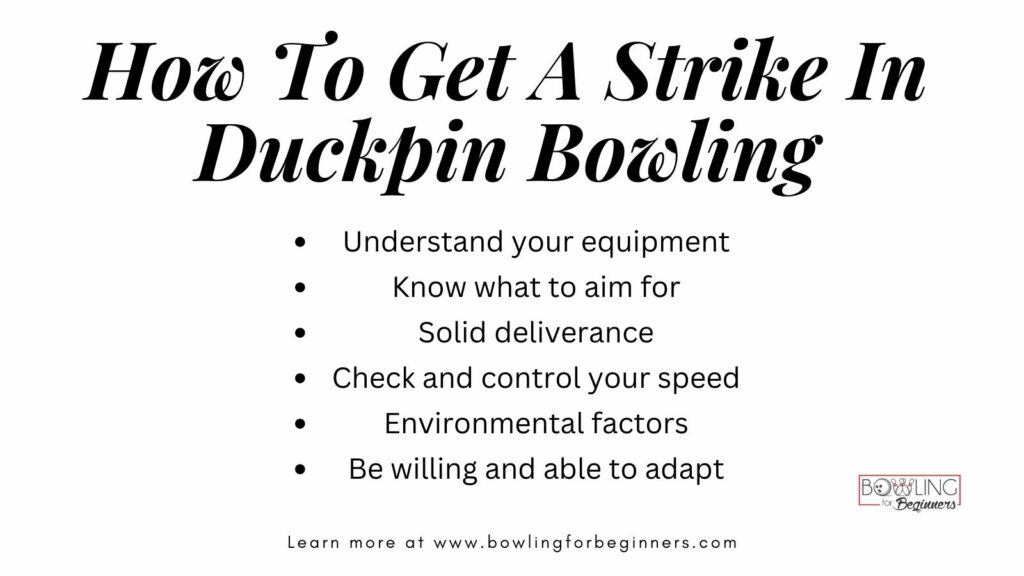
How to Do Well at Duckpin Bowling?
Doing well at duckpin bowling requires a combination of the tips we gave in the previous section. And practicing is just as important. Consistent practice not only helps you refine your grip, stance, speed, and aim, but it also helps you develop an instinctual understanding of how to read and adapt to different lane conditions.
Each frame provides a unique set of challenges and, therefore, opportunities for learning and growth. The more you practice, the more intuitive your adaptability becomes, which is invaluable in a game where conditions can change from frame to frame.
Additionally, practice allows you to experiment with different techniques without the pressure of a high-stakes game. You can take the time to adjust your speed, refine your aim, or even try out new approaches altogether.
This "sandboxing" can be critical in helping you identify what works best for you in different scenarios, further enhancing your adaptability.
However, it's worth noting that not all practice sessions are created equal. Aim for the focused, deliberate practice where you pay close attention to each roll, analyze your performance, and make purposeful adjustments.
If you simply go through the motions without thoughtfully engaging with the game, you're unlikely to see significant improvements.
Is Duckpin Bowling Harder Than Regular Bowling?
The question of whether duckpin bowling is harder than regular ten-pin bowling is a matter of personal perspective, but there are some objective differences that might make duckpin more challenging for many players.
First, the balls in duckpin are smaller and lack finger holes, requiring different grip and throwing techniques. This can take some getting used to, especially if you're transitioning from ten-pin bowling.
Additionally, the pins in duckpin are shorter and lighter, which might seem like they'd be easier to knock over, but that's offset by the smaller, lighter ball. This often makes strikes and spares harder to achieve.
Combine these factors with varying lane conditions, and you get a game that demands a high level of skill, adaptability, and precision. So, while "harder" is subjective, there's a strong case to be made that duckpin bowling is more challenging in several key aspects.
Chances are you'll find that traditional bowling is easier, but the only way to find out is to try playing duckpin bowling.
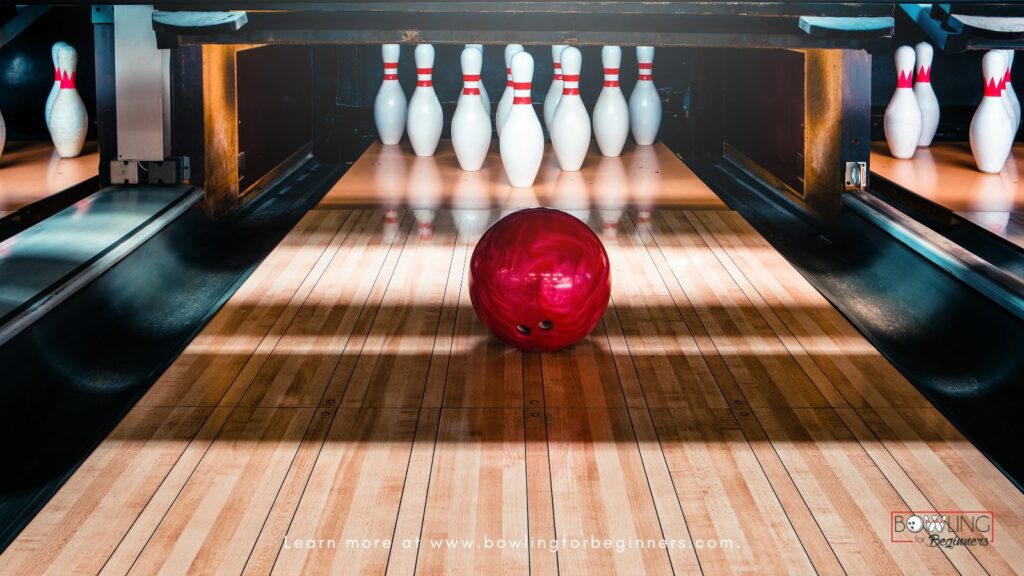
How Do You Get a Strike Every Time in Bowling?
The idea of getting a strike every time in bowling is the Holy Grail for many bowlers, but it's important to note that there's no guaranteed method for consistent strikes; if there were, everyone would be doing it.
Bowling, whether it's ten-pin or duckpin, involves a complex interplay of factors like ball speed, grip, aim, lane conditions, and more. Even professionals who've spent years perfecting their craft can't get a strike every single time.
That said, there are techniques to improve your strike potential—such as targeting the "pocket" or headpin, perfecting your throws, and practicing consistently.
Ultimately, while it's improbable to strike every time, a deep understanding of the game's mechanics combined with rigorous practice can significantly increase your strike rate.
Related Articles
We hope our duckpin bowling tips have given you clarity on how to strike in duckpin bowling. We hope you found the information you needed. But always remember that the #1 reason to play is to enjoy duckpin bowling.
Our conclusion duckpin bowling is actually a pretty cool sport stands true. If you go into the experience with that goal, there's no way you can lose.
Kira Byrd, a Certified Fraud Examiner, holds a B.S. in Accounting from the University of Alabama at Birmingham. With a passion for bowling from her childhood, Kira has poured her expertise and personal experiences into creating and nurturing Bowling For Beginners. Kira's mission is to meet new bowlers where they are and guide them toward consistently achieving higher scores. With a focus on skill development and strategic techniques, she empowers readers to take control of their game and unlock their true potential.
Bowling For Beginners embodies strict editorial integrity, ensuring reliable and unbiased information. Kira's commitment to delivering valuable insights and practical strategies is reflected in every article. Here's an explanation of our editorial policy and how we get money.


